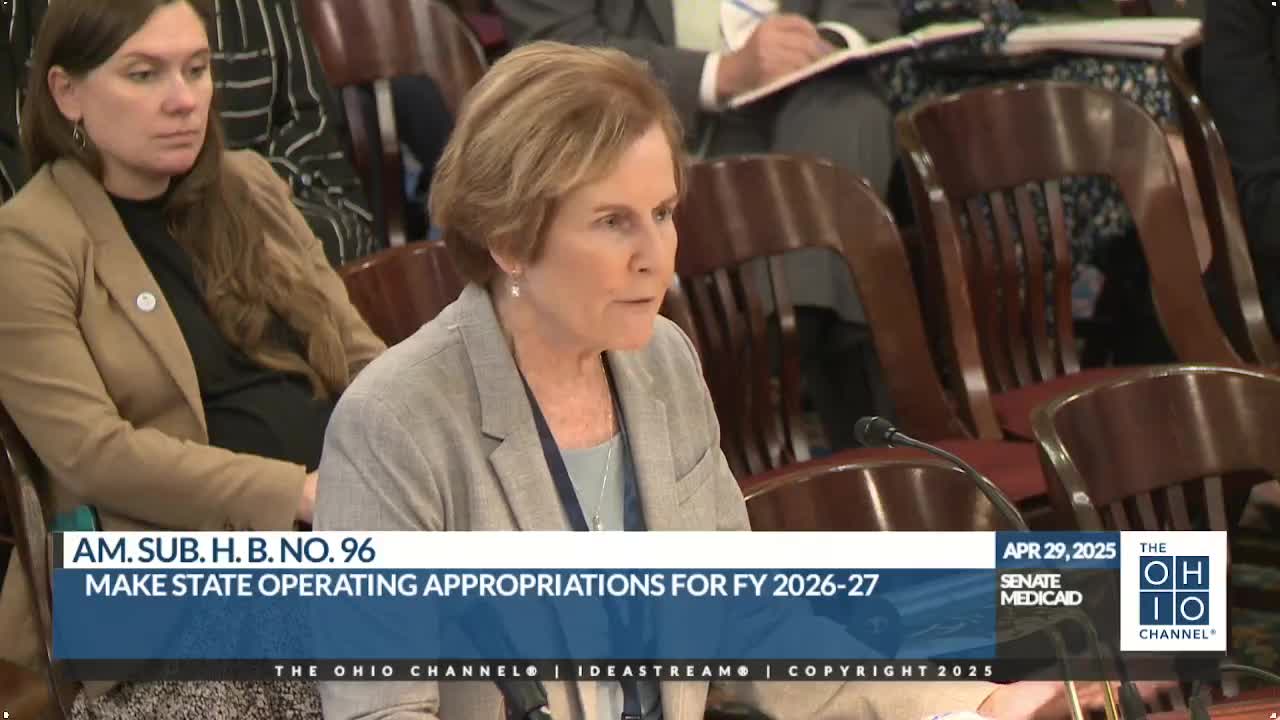Ohio healthcare payment gaps raise concerns over Medicaid and Medicare rates
April 29, 2025 | Medicaid, Senate, Committees, Legislative, Ohio
This article was created by AI summarizing key points discussed. AI makes mistakes, so for full details and context, please refer to the video of the full meeting. Please report any errors so we can fix them. Report an error »

In a recent Ohio Senate Medicaid Committee meeting, the stark realities of healthcare funding were laid bare, revealing a significant financial gap that affects hospitals and patients alike. As discussions unfolded, committee members highlighted the troubling disparity between Medicaid, Medicare, and commercial insurance payments, painting a vivid picture of the challenges faced by healthcare providers in the state.
The meeting began with a striking comparison: the average Medicaid base payment in Ohio stands at just one dollar, while Medicare payments reach approximately one dollar and forty-seven cents. This 47-cent gap, representing a 47% difference, underscores the financial strain on hospitals that rely on these government programs. The situation becomes even more pronounced when commercial rates are introduced, averaging around three dollars and sixty-six cents. This disparity illustrates a phenomenon known as cost shifting, where hospitals often transfer the financial burden of lower Medicaid payments onto private payers.
Committee members emphasized that Medicaid is considered the payment of last resort, consistently offering the lowest reimbursement rates. Neither Medicaid nor Medicare adequately covers the actual costs of hospital services, leading to a significant shortfall in funding for essential care, including doctor visits, surgeries, and emergency services. This gap not only affects the financial health of hospitals but also has broader implications for patient care and access to services.
The discussion also touched on existing federal laws that allow for certain payment mechanisms, which have been utilized in nursing facilities and other care settings. While these mechanisms are not new, their relevance in addressing the ongoing funding challenges was a focal point of the meeting.
As the committee continues to explore solutions, the implications of these discussions resonate beyond the walls of the Senate chamber. The financial realities faced by healthcare providers in Ohio highlight the urgent need for reform and a reevaluation of how healthcare is funded, ensuring that all residents have access to the care they need without placing undue burdens on hospitals and taxpayers. The path forward remains uncertain, but the conversations initiated in this meeting are crucial for shaping the future of healthcare in Ohio.
The meeting began with a striking comparison: the average Medicaid base payment in Ohio stands at just one dollar, while Medicare payments reach approximately one dollar and forty-seven cents. This 47-cent gap, representing a 47% difference, underscores the financial strain on hospitals that rely on these government programs. The situation becomes even more pronounced when commercial rates are introduced, averaging around three dollars and sixty-six cents. This disparity illustrates a phenomenon known as cost shifting, where hospitals often transfer the financial burden of lower Medicaid payments onto private payers.
Committee members emphasized that Medicaid is considered the payment of last resort, consistently offering the lowest reimbursement rates. Neither Medicaid nor Medicare adequately covers the actual costs of hospital services, leading to a significant shortfall in funding for essential care, including doctor visits, surgeries, and emergency services. This gap not only affects the financial health of hospitals but also has broader implications for patient care and access to services.
The discussion also touched on existing federal laws that allow for certain payment mechanisms, which have been utilized in nursing facilities and other care settings. While these mechanisms are not new, their relevance in addressing the ongoing funding challenges was a focal point of the meeting.
As the committee continues to explore solutions, the implications of these discussions resonate beyond the walls of the Senate chamber. The financial realities faced by healthcare providers in Ohio highlight the urgent need for reform and a reevaluation of how healthcare is funded, ensuring that all residents have access to the care they need without placing undue burdens on hospitals and taxpayers. The path forward remains uncertain, but the conversations initiated in this meeting are crucial for shaping the future of healthcare in Ohio.
View full meeting
This article is based on a recent meeting—watch the full video and explore the complete transcript for deeper insights into the discussion.
View full meeting
